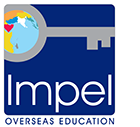A well-crafted resume plays a crucial role in your university application. It provides admissions committees with a clear picture of your academic achievements, skills, and experiences, helping you stand out among other applicants. Below are key guidelines to ensure your resume effectively showcases your qualifications.
Why Your Resume Matters
Your resume is not just a list of your credentials; it is a marketing tool that highlights your strengths and suitability for the chosen course. Universities often review resumes to assess your academic background, extracurricular involvement, work experience, and leadership qualities.
General Guidelines
- Keep it concise and ideally limited to one page (a maximum of two pages if necessary).
- Maintain a clear structure and professional format.
- Use action verbs to describe your achievements.
- Ensure consistency in formatting and avoid grammatical errors.
- Do not include unnecessary personal information (such as marital status or age).
Resume Structure
1. Personal Information
- Full Name
- Contact Details (Phone Number & Email Address)
- LinkedIn Profile (if applicable)
2. Career Objective (Optional)
A brief, tailored statement highlighting your academic aspirations and why you are applying for the specific course.
3. Academic Qualifications
- List your educational institutions, degrees obtained, and graduation dates.
- Include relevant coursework or dissertation topics if they align with the chosen program.
- Mention academic honors, scholarships, or distinctions.
4. Work Experience & Internships
- Detail any internships, part-time jobs, or full-time employment relevant to your chosen course.
- Use bullet points to highlight responsibilities and achievements.
- Quantify accomplishments where possible (e.g., “Improved efficiency by 30%”).
5. Extracurricular Activities & Leadership Roles
- Highlight student organizations, clubs, and leadership positions.
- Mention contributions made, events organized, and skills developed.
6. Research & Projects (If Applicable)
- Showcase academic research, independent projects, or group assignments.
- Include the objective, methodology, and outcomes.
7. Skills & Certifications
- List relevant technical and soft skills (e.g., analytical skills, programming, communication).
- Include certifications like IELTS, TOEFL, GRE, or GMAT, if applicable.
8. Volunteer Work & Community Service (If Any)
- Demonstrate involvement in community service or non-profit organizations.
- Highlight roles played and contributions made.
9. References (If Required)
- Some universities may request references. Include their names, designation, and contact details if required.
Formatting Tips
Font & Style
- Use professional fonts like Times New Roman, Arial, or Calibri.
- Font size: 11-12pt for body text, 14-16pt for headings.
Margins & Spacing
- Maintain 1-inch margins on all sides.
- Use clear section headings with bold or capital letters.
- Separate sections using white space for better readability.
Proofreading & Final Checks
- Check for typos and grammatical errors.
- Ensure information is accurate and up to date.
- Get a second opinion from a mentor, professor, or consultant.
Conclusion
A strong resume enhances your application, reinforcing why you are an ideal candidate for the course. Keep it professional, precise, and tailored to your desired university program. Follow these guidelines to increase your chances of securing admission to your dream university!
For further assistance with your university application, feel free to reach out to our expert counsellors!



